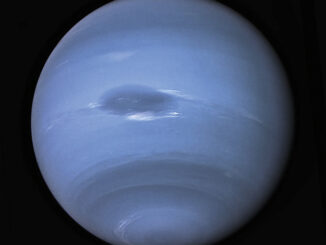
Among the Moon’s most alluring features are its numerous valleys rilles and faults, many of which can be observed through small- to moderate-aperture telescopes. Highlights include the well-known and spectacular Vallis Alpes (the Alpine Valley), a lunar rift valley that cuts a straight path through the magnificent Montes Alpes (lunar Alps) and Vallis Schröteri (Schröter’s Valley), which meanders across the Aristarchus Plateau.

The Alpine Valley: A gouge in the Moon
The remarkable Vallis Alpes has to be one of the best examples of a rift valley on the Moon. Looking like a giant crack in the lunar topography, the 160-kilometre or so long Alpine Valley bisects the magnificent Vallis Alpes. This whole region, bounded by Mare Frigoris (Sea of Cold) and Mare Imbrium (Sea of Rains), is full of eye-candy, including superb Plato, the dark-floored crater to the west of the valley. In places the Alpine Valley is 20 kilometres wide, and its floor lies some 2,000 metres below the crests of its steep walls.
Vallis Alpes is on show at around the Moon’s first quarter phase or six days after full Moon. It’s in good shape on the early evening of 17 February, when it emerges into the morning sunlight (Plato follows suit by the following evening).

Schröter’s Valley: A striking lava channel
Vallis Schröteri is perhaps the prime example of a lunar rille (from the German word for a groove), channel-like depressions which can be straight or meandering. Schröter’s Valley is the largest example of a sinuous rille, which snakes like a dried-up river bed for 160 kilometres (on average six kilometres wide) across the Aristarchus Plateau, which is located on the Oceanus Procellarum (Ocean of Storms) to the north-west of the magnificent terraced-crater Copernicus.
Schröter’s Valley is in fact a volcanic feature, a lava flow originating from the ‘Cobra Head’, a volcanic caldera just to the north of crater Herodotus.
The best opportunity to observe Schröter’s Valley occurs when the Moon is around four days after first quarter or three days after last quarter. The Moon is around 12 days old on the evening of 21 February, from which time the Aristarchus Plateau is bathed by morning sunlight. A 100mm telescope is sufficient to resolve Schröter’s Valley but a larger telescope, say in the 250mm (10-inch) class can also reveal narrower sinuous rilles to the north, located between craters Prinz and Krieger.
Rimae Ariadaeus and Hyginus
You get two for the price of one when training your telescope between the small lunar mare Sinus Medii (Middle Bay) and the western edge of the Mare Tranquillitatis (Sea of Tranquility). Lying between craters Julius Caesar (to the north) and Agrippa, Rima Ariadaeus is a dramatic ‘crack’ that strikes west-north-westwards for over 200 kilometres before encountering the eastern end of Rima Hyginus, an amazing-looking valley largely consisting of an interlocked chain of small craters that extends more than 110 kilometres either side of 11-kilometre-wide crater Hyginus.
Both features are best presented around six days after new Moon and five days after full Moon. On the evening of 16/17 February, they fully emerge gloriously into the morning sunlight, with the morning terminator lying to the east of crater Hyginus. Rima Ariadaeus and Rima Hyginus can be seen along their entire length through a 100-150mm telescope.

Rupes Recta:The awesome Straight Wall
Rupes Recta, or the Straight Wall, is a majestic one- to three-kilometre-wide linear fault running for 110 kilometres in south-eastern Mare Nubium. Just to the west lies Rima Birt (50 kilometres long), a narrow rille running parallel to Rupes Recta northwards from the small crater Birt.
Rupes Recta is bathed in morning sunlight by the evening of 17/18 February, when a small telescope can easily reveal a slightly curving narrow line that will gradually blend into the background as the Wall’s shadow shortens as the Sun climbs across Mare Nubium. You’ll need a larger telescope though to see Rima Birt.



